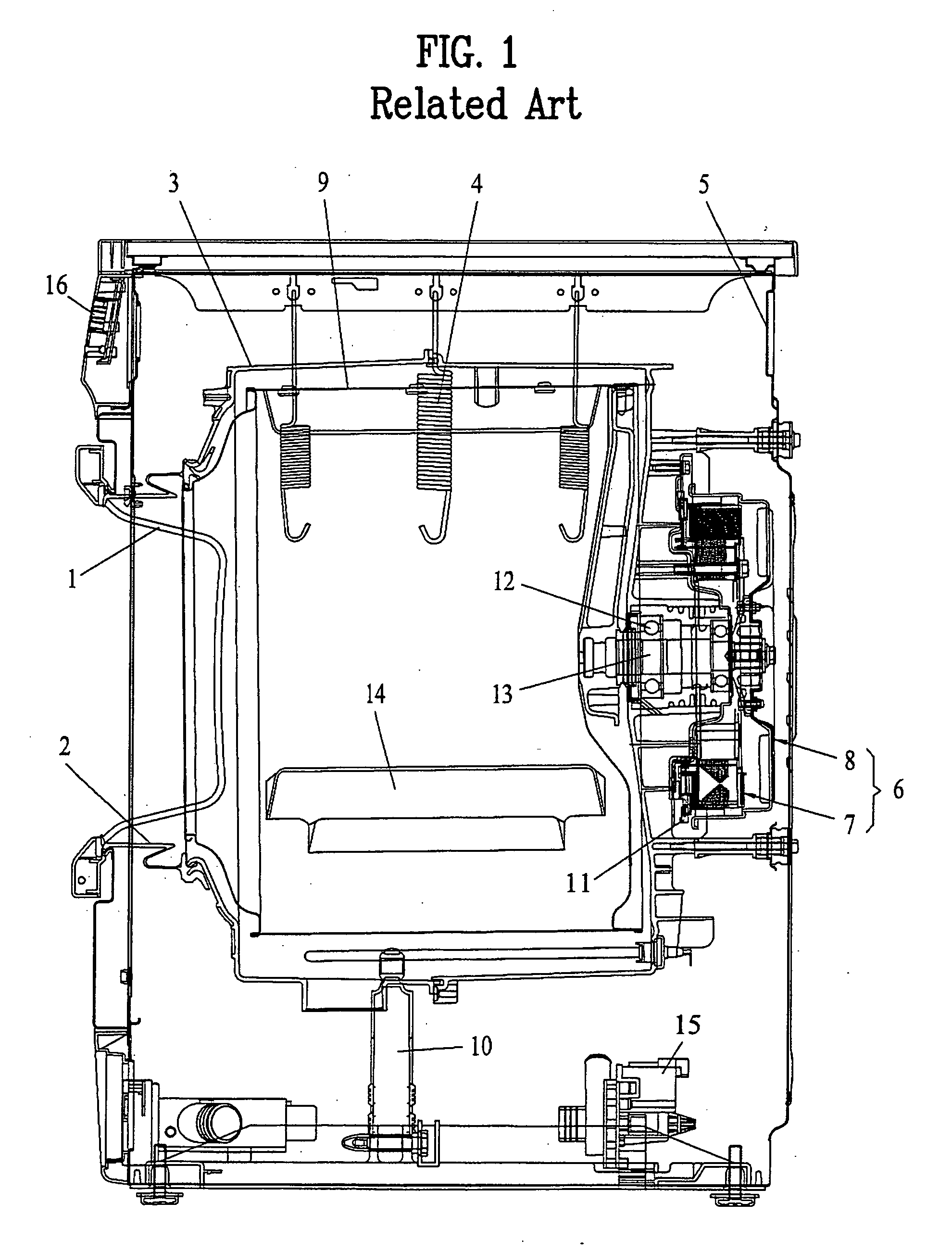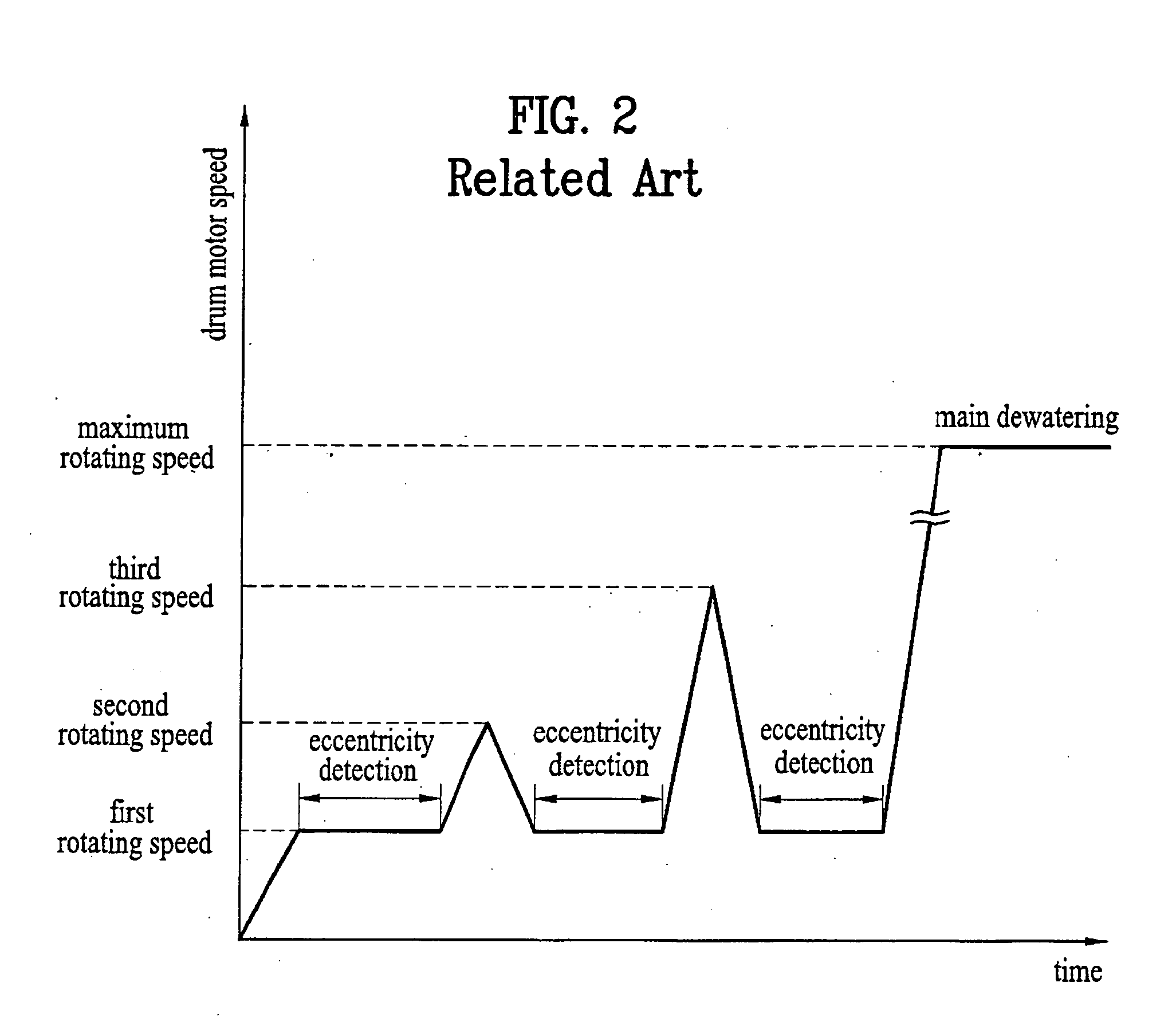Method for controlling spinning in drum-type washing machine
- Summary
- Abstract
- Description
- Claims
- Application Information
AI Technical Summary
Benefits of technology
Problems solved by technology
Method used
Image
Examples
first embodiment
[0042]FIG. 5 illustrates a method for controlling a drum-type washing machine in accordance with the present invention. Here, dewatering is performed without a preliminary dewatering stage.
[0043] Referring to FIG. 5, the drum motor of a drum-type washing machine according to the present invention is accelerated (S507) to a first rotating speed (e.g., 100 rpm) for eccentricity detection (S508), which is a predetermined rotating speed causing the laundry to be held against the inner wall of the drum without falling from the lifts during rotation. This eccentricity detection speed is maintained for a predetermined time during which eccentricity is detected. Assuming that the detected eccentricity falls within a nominal range (S509), the drum motor is accelerated further to a second rotating speed (e.g., 250 rpm) for extracting water from the laundry, which is a predetermined rotating speed at which laundry would be forced outward and pressed tightly against an inner wall of the drum. T...
second embodiment
[0049]FIG. 6 illustrates a method for controlling a drum-type washing machine in accordance with the present invention. Here, dewatering is performed with a preliminary dewatering stage, and the method of the present invention may include more than one such stage. The preliminary dewatering stage is typically performed in conjunction with an initial eccentricity detection and includes an acceleration of the rotating speed of the drum motor, motor rotation at the preliminary dewatering speed, and a deceleration of the drum motor to a stopped state.
[0050] Referring to FIG. 6, drum motor speed is increased to an eccentricity detection speed (S601) or first rotating speed, whereupon eccentricity detection is performed (S602), and the detection results are processed (S603). Typically, eccentricity detection performed during a preliminary dewatering stage is applicable to large capacity washing machines, such that the main watering phase cannot be entered as a result of such detection, an...
PUM
 Login to View More
Login to View More Abstract
Description
Claims
Application Information
 Login to View More
Login to View More - R&D
- Intellectual Property
- Life Sciences
- Materials
- Tech Scout
- Unparalleled Data Quality
- Higher Quality Content
- 60% Fewer Hallucinations
Browse by: Latest US Patents, China's latest patents, Technical Efficacy Thesaurus, Application Domain, Technology Topic, Popular Technical Reports.
© 2025 PatSnap. All rights reserved.Legal|Privacy policy|Modern Slavery Act Transparency Statement|Sitemap|About US| Contact US: help@patsnap.com



